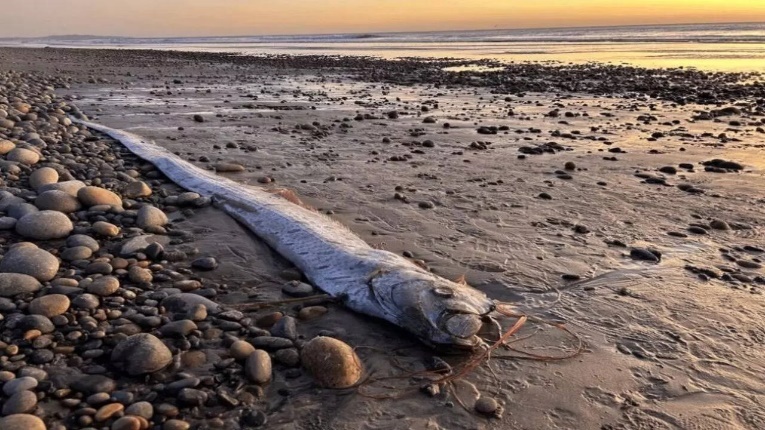PRELIMS BITS

Context:
Recent sightings of the rare oarfish, also known as the “Doomsday Fish”, near Baja California Sur, Mexico, have fueled speculation about natural disasters.
About the Doomsday Fish
- Common Names: Oarfish, Doomsday Fish
Distribution & Habitat:
- Found in deep-sea waters of the Pacific, Atlantic, and Indian Oceans.
- Lives at depths of 200-1,000 meters, near continental slopes and oceanic trenches.
Physical & Biological Features:
- Size: The longest bony fish in the world, reaching up to 11 meters.
- Appearance: Ribbon-like, shimmering silver body with red dorsal fins running along its length.
- Diet: Feeds on krill, plankton, and small crustaceans.
- Lifespan: Estimated up to 20 years, but rarely seen due to its deep-sea habitat.
Theories Linking Oarfish to Natural Disasters
- Folklore & Earthquake Myths:
- In Japanese mythology, the oarfish is called “Ryugu no tsukai” (Messenger from the Sea God’s Palace).
- It is believed to surface before earthquakes and tsunamis.
- This belief gained traction when oarfish washed ashore before the 2011 Tōhoku earthquake in Japan.
- Scientific Explanations & Skepticism:
- Some researchers believe oarfish may be sensitive to seismic activity due to deep-sea fault lines.
- A 2019 study by the Bulletin of the Seismological Society of America found no proven link between oarfish sightings and earthquakes.
- Experts suggest sightings occur due to:
- Illness or weakness in the fish.
- Deep-sea currents pushing them toward the surface.
- Changes in water temperature or pressure rather than seismic activity.
While the oarfish’s rare appearances have long been associated with natural disasters, scientific evidence does not support this myth. Instead, environmental factors such as ocean currents, temperature shifts, or stressors likely explain its occasional surfacing.




